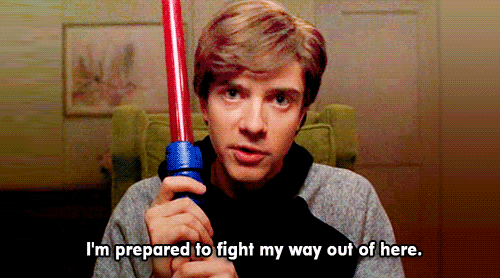As if giving a compelling presentation isn’t challenge enough, what do you do in a situation that makes it even harder for your presentation to be a success?
You might have to present first thing in the morning or at the end of a long day. You unexpectedly have a lot less time than you planned for. You have the tough task of announcing something that will upset people. Or, you’re doomed to face a barrage of aggressive questions.
Even if you’ve learned how to conquer your public speaking fears and studied tips on effective public speaking, you need to prepare for common worst-case scenario presentations. If you’re prepared, you won’t have anything to fear.
You’re the first presenter early in the morning
It’s the predictable a.m. meeting mess. People are more interested in scoring their favorite donut than they are in taking their seats. They’re groggy-eyed, foggy brained, and easily distracted. Folks keep wandering in after you’ve started talking.
To raise the energy in the room, you have to be the most energetic person there—although, don’t be so energetic that you annoy the already cranky. First, make sure your presentation won’t put people to sleep. Kick-start your morning talk by skipping the the boring introduction and detailed agenda (which is good advice any time of the day). Instead, start strong with a fun surprise, like a game or activity, or tell a compelling story to get people intrigued.
And, if you can, either put those donuts outside the meeting room or right in front of you so people have no choice but to look in your direction.

You’re the last presenter at the end of a long day
Your audience has already sat through hours of presentations, some of which bored them, others of which left them mentally exhausted. More than anything, they want to go home so all eyes are on the clock instead of on you.
Much like presenting in the morning, you need to bring the energy and be extra interesting. Shake things up by turning off the PowerPoint, taking your talk outside, or getting people out of their seats with an interactive activity. No matter what, do not go overtime. I repeat: DO NOT GO OVERTIME.
Let’s be honest—no one will complain if your presentation is shorter than scheduled and they get to leave early.

Surprise! You have less time than you planned for
Some of the other presenters (jerks!) ran long, cutting into the time you have to present. The result? You got stressed out and fast-talked like an auctioneer, and no one in your audience learned a thing.
Especially if you know you’re up last, don’t make the mistake of planning a presentation that completely fills your time slot. Besides, a good presenter is always prepared to trim time or skip ahead. Have versions of your presentation that are one-half and (yes, really) one-quarter the allotted time. Let your audience know what you’ll skip. Reassure them that they can ask questions about the skipped topics during the Q&A or later on, one-on-one. Share your slides and notes afterward so they can read the missed details.

You have bad news to deliver
If your presentation is bad news, you’ll only evoke more anger and confusion if you seem like you’re sugarcoating the problem or being less than honest. Don’t evade the issue, deliver the bad news clearly yet succinctly. Share the strategy for recovery and moving forward. (You do have a strategy, riiiiiiight?) Then, tell them when and how they’ll next get an update on the situation.
Being the bearer of bad news means there may be a lot of hard questions asked by upset, confused people. You need a strong plan for how you’ll answer those questions. Since it’s human nature for people to first focus on how this bad news affects them personally, be ready to address their concerns. Let them know the impact on their job, if any. Give them a way to privately communicate with whoever’s in charge.

The Q&A promises to be brutal
Whether it’s because you are presenting on a controversial topic or because you work with a bunch of bullying grandstanders, you should always try to anticipate your audience’s questions. Come up with a list of what they might ask and rehearse your responses. If you don’t know the answer or are not the appropriate person to provide information, it’s okay to say that.
Nothing is more disarming than honesty, so when possible, acknowledge difficult situations and admit if mistakes were made. Don’t play the blame game and avoid rambling excuses. Rather than allowing everyone to dwell on the past, focus on the positive solutions that the future will bring.

Have you ever faced one of these worst-case scenario presentations? Share what happened—and how you handled it—in a comment.
Lauren Girardin is a marketing and communications consultant, writer, and trainer. Find her on Twitter at @girardinl.





Leave a Reply
You must be logged in to post a comment.